Posted on January 11th, 2019 by Mary Lord
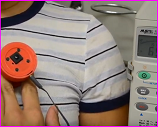 Health clinics in the developing world often are noisy places, making it doubly difficult for medics to hear whether a child has pneumonia or other potentially fatal respiratory illness. So engineers and doctors at Johns Hopkins University in Baltimore, Md., teamed up to reinvent the stethoscope using audio technology and artificial intelligence.
Health clinics in the developing world often are noisy places, making it doubly difficult for medics to hear whether a child has pneumonia or other potentially fatal respiratory illness. So engineers and doctors at Johns Hopkins University in Baltimore, Md., teamed up to reinvent the stethoscope using audio technology and artificial intelligence.
Read More
Filed under: Special Features | Comments Off on Engineering a “Smart” Stethoscope
Tags: artificial intelligence, Biomedical Engineering, Johns Hopkins University, public health, smart stethoscope
Posted on January 11th, 2019 by Mary Lord
 In this NGSS-aligned activity, high school students work as biomedical engineers to find liquid solutions that can clear away polyvinyl acetate polymer “blood clots” in model arteries made of clear, flexible tubing. Teams create samples of the “blood clot” polymer to discover the concentration of the model clot and then test a variety of liquids to determine which most effectively breaks it down. Students learn the importance of the testing phase in the engineering design process, because they are only given one chance to present the team’s solution and apply it to the model blood clot.
In this NGSS-aligned activity, high school students work as biomedical engineers to find liquid solutions that can clear away polyvinyl acetate polymer “blood clots” in model arteries made of clear, flexible tubing. Teams create samples of the “blood clot” polymer to discover the concentration of the model clot and then test a variety of liquids to determine which most effectively breaks it down. Students learn the importance of the testing phase in the engineering design process, because they are only given one chance to present the team’s solution and apply it to the model blood clot.
Read More
Filed under: Class Activities, Grades 9-12, Lesson Plans | Comments Off on Let the Blood Flow: Biomedical Artery Unclogging Experiment
Tags: arteries, Biomedical Engineering, Chemistry, circulatory system, Class Activities, Grades 9-12, heart, Lesson Plan, NGSS, stent, TeachEngineeirng, UCLA SEEK GK-12 program, valves
Posted on December 13th, 2017 by Mary Lord
 Students in grades 6 to 9 learn about biomedical engineering and the human sensory system, then follow the engineering design process to create sensory-integration toys for youngsters with developmental disabilities.
Students in grades 6 to 9 learn about biomedical engineering and the human sensory system, then follow the engineering design process to create sensory-integration toys for youngsters with developmental disabilities.
Read More
Filed under: Class Activities, Grades 6-8, Lesson Plans | Comments Off on Sensory Toys Make Sense!
Tags: adaptive technology, Biomedical Engineering, Class Activities, Engineering Design, Grades 6-8, Lesson Plan, sensory integration toys, special needs students, toy adaptation
Posted on November 15th, 2017 by Mary Lord
 Middle and high school students follow the engineering design process to create wearable devices to monitor the health of humans, animals, or both in this competition sponsored by North Carolina State University’s Nanosystems Engineering Research Center for Advanced Self-Powered Systems of Integrated Sensors and Technologies (ASSIST). The program includes teacher training and lesson plans to help implement the design challenge. Register teams by Feb. 15, 2018.
Middle and high school students follow the engineering design process to create wearable devices to monitor the health of humans, animals, or both in this competition sponsored by North Carolina State University’s Nanosystems Engineering Research Center for Advanced Self-Powered Systems of Integrated Sensors and Technologies (ASSIST). The program includes teacher training and lesson plans to help implement the design challenge. Register teams by Feb. 15, 2018.
Read More
Filed under: Grades 6-8, Grades 9-12, K-12 Outreach Programs | Comments Off on Wearable Device Challenge
Tags: Biomedical Engineering, Competitions for Students, Contest, Electrical Engineering, Engineering Design Process, environment, Grades 6-8, Grades 9-12, Health, Lesson Plans, sensors, Teacher Training, wearable technology
Posted on July 3rd, 2017 by Mary Lord
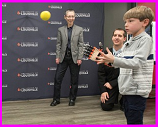 Imagine not being able to pick up a glass of water, open a door, or play catch because you had no hands. Now imagine you’re a biomedical engineer and can help amputees regain dexterity – with the help of a home 3D printer.
Imagine not being able to pick up a glass of water, open a door, or play catch because you had no hands. Now imagine you’re a biomedical engineer and can help amputees regain dexterity – with the help of a home 3D printer.
Read More
Filed under: K-12 Education News, K-12 Outreach Programs, Special Features | Comments Off on Helping Hands
Tags: assistive technologies, Biomedical Engineering, Engineering outreach, engineering summer programs, George Mason University, Ohio State Toy Adaptation program, Programs for Students, Prosthetics, Summer Camps & Programs (Students), University of Cincinnati, University of Oklahoma Gallogly College of Engineering, violin
Posted on July 3rd, 2017 by Mary Lord
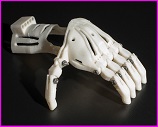 Working in groups of three, middle school students learn about types of forces, the relationship between form and function, and the structure of the hand by working as biomedical engineers to design, build, and test their own hand “gripper” prototypes that can grasp and lift a 200 ml cup of sand.
Working in groups of three, middle school students learn about types of forces, the relationship between form and function, and the structure of the hand by working as biomedical engineers to design, build, and test their own hand “gripper” prototypes that can grasp and lift a 200 ml cup of sand.
Read More
Filed under: Class Activities, Grades 6-8, Grades 6-8, Lesson Plans | Comments Off on Lend A Hand: Teaching Forces
Tags: adaptive device, anatomy, assistive technology, Biomedical Engineering, Class Activities, Design, disability, forces, Grades 6-8, hand, Lesson Plan, prosthetic
Posted on March 10th, 2017 by Mary Lord
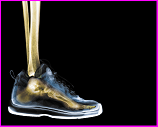 Students in upper elementary/early middle school follow the engineering design process to brainstorm and build prototype sneakers from a variety of materials to meet such design requirements as good traction or deep cushioning. They learn how the sole provides support, cushioning, and traction. There also may be some fashion-based functions, including cool colors or added height.
Students in upper elementary/early middle school follow the engineering design process to brainstorm and build prototype sneakers from a variety of materials to meet such design requirements as good traction or deep cushioning. They learn how the sole provides support, cushioning, and traction. There also may be some fashion-based functions, including cool colors or added height.
Read More
Filed under: Class Activities, Grades 6-8, Grades K-5 | 2 Comments »
Tags: 3-D modeling, athletic, Biomedical Engineering, Class Activities, computer-assisted design, engineering design proces, Grades 6-8, Grades K-5, manufacturing, shoe design, sneaker, Sports
Posted on October 25th, 2013 by Mary Lord
 Imagine life without sound. That’s the reality for hundreds of thousands of deaf individuals. Thanks to a device called the cochlear implant – the first medical apparatus to restore a human sense – many now can hear. Its three inventors won the 2013 Lasker Prize for their work.
Imagine life without sound. That’s the reality for hundreds of thousands of deaf individuals. Thanks to a device called the cochlear implant – the first medical apparatus to restore a human sense – many now can hear. Its three inventors won the 2013 Lasker Prize for their work.
Read More
Filed under: Special Features | Comments Off on Now Hear This: Cochlear Implant Inventor Wins Lasker Prize
Tags: adaptive technology, assistive technologies, Biomedical Engineering, cochelear implants, deaf, disabilities, Electrical Engineering, hearing, Ingeborg Hochmair, Lasker Prize
Posted on June 19th, 2011 by Mary Lord
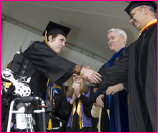 When University of California, Berkeley senior Austin Whitney walked across the stage at graduation on May 14, 2011, it was more than just a personal triumph. His rise from a wheelchair represented a triumph for paralyzed people everywhere–and for engineers whose “adaptive technology” designs have helped disabled individuals overcome mobility limitations.
When University of California, Berkeley senior Austin Whitney walked across the stage at graduation on May 14, 2011, it was more than just a personal triumph. His rise from a wheelchair represented a triumph for paralyzed people everywhere–and for engineers whose “adaptive technology” designs have helped disabled individuals overcome mobility limitations.
Read More
Filed under: Special Features | Comments Off on Berkeley Engineers Help Student Walk
Tags: adaptive technologies, Berkeley, Biomedical, Biomedical Engineering, Engineering, Materials Engineering, Robotics
 Health clinics in the developing world often are noisy places, making it doubly difficult for medics to hear whether a child has pneumonia or other potentially fatal respiratory illness. So engineers and doctors at Johns Hopkins University in Baltimore, Md., teamed up to reinvent the stethoscope using audio technology and artificial intelligence.
Health clinics in the developing world often are noisy places, making it doubly difficult for medics to hear whether a child has pneumonia or other potentially fatal respiratory illness. So engineers and doctors at Johns Hopkins University in Baltimore, Md., teamed up to reinvent the stethoscope using audio technology and artificial intelligence.








 In this NGSS-aligned activity, high school students work as biomedical engineers to find liquid solutions that can clear away polyvinyl acetate polymer “blood clots” in model arteries made of clear, flexible tubing. Teams create samples of the “blood clot” polymer to discover the concentration of the model clot and then test a variety of liquids to determine which most effectively breaks it down. Students learn the importance of the testing phase in the engineering design process, because they are only given one chance to present the team’s solution and apply it to the model blood clot.
In this NGSS-aligned activity, high school students work as biomedical engineers to find liquid solutions that can clear away polyvinyl acetate polymer “blood clots” in model arteries made of clear, flexible tubing. Teams create samples of the “blood clot” polymer to discover the concentration of the model clot and then test a variety of liquids to determine which most effectively breaks it down. Students learn the importance of the testing phase in the engineering design process, because they are only given one chance to present the team’s solution and apply it to the model blood clot. Students in grades 6 to 9 learn about biomedical engineering and the human sensory system, then follow the engineering design process to create sensory-integration toys for youngsters with developmental disabilities.
Students in grades 6 to 9 learn about biomedical engineering and the human sensory system, then follow the engineering design process to create sensory-integration toys for youngsters with developmental disabilities. Middle and high school students follow the engineering design process to create wearable devices to monitor the health of humans, animals, or both in this competition sponsored by North Carolina State University’s Nanosystems Engineering Research Center for Advanced Self-Powered Systems of Integrated Sensors and Technologies (ASSIST). The program includes teacher training and lesson plans to help implement the design challenge. Register teams by Feb. 15, 2018.
Middle and high school students follow the engineering design process to create wearable devices to monitor the health of humans, animals, or both in this competition sponsored by North Carolina State University’s Nanosystems Engineering Research Center for Advanced Self-Powered Systems of Integrated Sensors and Technologies (ASSIST). The program includes teacher training and lesson plans to help implement the design challenge. Register teams by Feb. 15, 2018. Imagine not being able to pick up a glass of water, open a door, or play catch because you had no hands. Now imagine you’re a biomedical engineer and can help amputees regain dexterity – with the help of a home 3D printer.
Imagine not being able to pick up a glass of water, open a door, or play catch because you had no hands. Now imagine you’re a biomedical engineer and can help amputees regain dexterity – with the help of a home 3D printer. Working in groups of three, middle school students learn about types of forces, the relationship between form and function, and the structure of the hand by working as biomedical engineers to design, build, and test their own hand “gripper” prototypes that can grasp and lift a 200 ml cup of sand.
Working in groups of three, middle school students learn about types of forces, the relationship between form and function, and the structure of the hand by working as biomedical engineers to design, build, and test their own hand “gripper” prototypes that can grasp and lift a 200 ml cup of sand. Students in upper elementary/early middle school follow the engineering design process to brainstorm and build prototype sneakers from a variety of materials to meet such design requirements as good traction or deep cushioning. They learn how the sole provides support, cushioning, and traction. There also may be some fashion-based functions, including cool colors or added height.
Students in upper elementary/early middle school follow the engineering design process to brainstorm and build prototype sneakers from a variety of materials to meet such design requirements as good traction or deep cushioning. They learn how the sole provides support, cushioning, and traction. There also may be some fashion-based functions, including cool colors or added height. Imagine life without sound. That’s the reality for hundreds of thousands of deaf individuals. Thanks to a device called the cochlear implant – the first medical apparatus to restore a human sense – many now can hear. Its three inventors won the 2013 Lasker Prize for their work.
Imagine life without sound. That’s the reality for hundreds of thousands of deaf individuals. Thanks to a device called the cochlear implant – the first medical apparatus to restore a human sense – many now can hear. Its three inventors won the 2013 Lasker Prize for their work. When University of California, Berkeley senior Austin Whitney walked across the stage at graduation on May 14, 2011, it was more than just a personal triumph. His rise from a wheelchair represented a triumph for paralyzed people everywhere–and for engineers whose “adaptive technology” designs have helped disabled individuals overcome mobility limitations.
When University of California, Berkeley senior Austin Whitney walked across the stage at graduation on May 14, 2011, it was more than just a personal triumph. His rise from a wheelchair represented a triumph for paralyzed people everywhere–and for engineers whose “adaptive technology” designs have helped disabled individuals overcome mobility limitations.